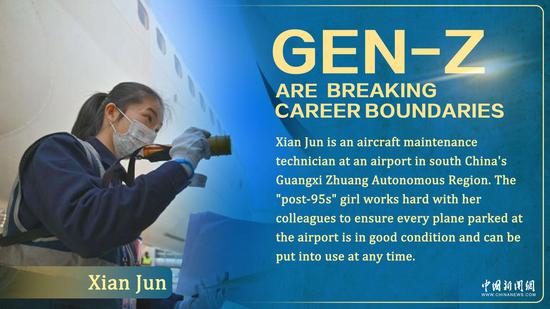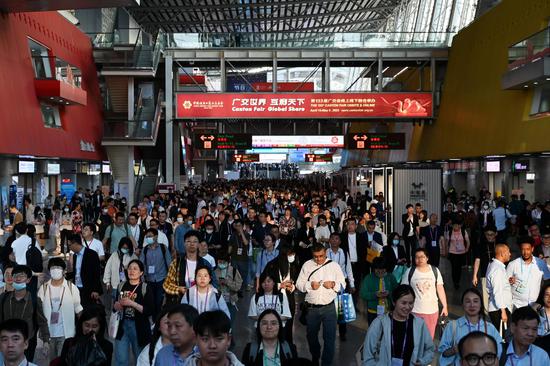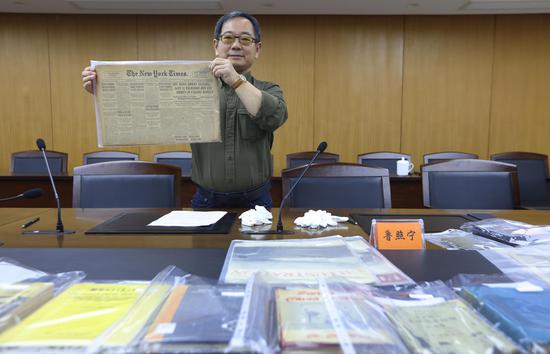Major international chipmakers have reported rising losses in the first quarter of 2023 amid weak demand and sweeping U.S. chip export curbs on China, the world's largest semiconductor market.
Washington's reckless disturbance in businesses will continue to cloud the outlook for the industry, as major chipmakers have life-and-death stakes in the huge Chinese market, analysts said.
Samsung reported operating profit of 640 billion won ($478.55 million) in the first quarter, plunging 95 percent year-on-year. This is the company's worst quarterly performance since 2009, when the chip industry was battered by the global financial crisis.
Intel suffered a net loss of $2.8 billion in Q1 from a year-earlier net profit of $8.1 billion. It was Intel's largest quarterly loss ever, data showed.
Industry analysts said major chip firms' losses reflect a severe supply and demand mismatch and disruption in the industry amid mounting U.S. chip export controls on China, elevated inflation and a gloomy world economy.
"Amid weak consumer spending on smartphones and computers, the manufacturers have reduced stock-up of chips, leading to historic revenue drops for many semiconductor giants," Liang Zhenpeng, a senior industry analyst, told the Global Times on Thursday.
U.S. chip export controls on China also affect chipmakers' business, because "it's hard for them to fill the void if they're banned from selling to Chinese companies", he said.
The reckless U.S. chip ban has affected the supply and demand of semiconductors across the world, Xiang Ligang, director-general of the Beijing-based Information Consumption Alliance, told the Global Times on Thursday.
"Chip firms started to hoard semiconductors in 2021 amid a U.S. push for 'tech decoupling' from China, which led to excess inventories," he said, projecting that the problem may ease in the second half of 2023.
However, China added almost 100 new chip production lines, which will lead to a great change in global supply and demand.
U.S. chip ban backfires
As part of its move to contain China's rise, the U.S. stepped up efforts to exclude China from the global semiconductor industry chain.
After imposing sweeping export restrictions on shipments of chipmaking tools to China last October, the U.S. pressured the Netherlands and Japan to join its chip export controls on China, in addition to signing a memorandum of understanding with India on semiconductor cooperation to enlist India to join its small circle.
U.S. President Joe Biden is reportedly planning to issue an executive order in coming weeks restricting U.S. investment in China, according to U.S. media reports.
Many foreign semiconductor firms have bet on China's strong economic rebound to drive market demand. But they dare not invest much in new production capacity, in part due to a lack of confidence amid rising uncertainties brought about by U.S. unilateralism and protectionism, Ma Jihua, a veteran industry expert, told the Global Times.
South Korean chipmaker SK Hynix Inc plans to reduce investment in 2023 by more than 50 percent.
Despite the Biden administration's push for "tech decoupling," U.S. semiconductor companies still want access to the huge China market, Bloomberg reported on Wednesday, citing a major industry group.
"It's our biggest market and we're not the only industry that lays claim to that," said John Neuffer, the president that chief executive officer of the U.S. Semiconductor Industry Association (SIA).
"Our view is that we need to play in that market," he said.
Striving for breakthroughs
China is the world's largest consumer of semiconductors, and global chipmakers face life-and-death stakes if they lose the massive Chinese market, analysts said.
According to the SIA, China remained the largest single market for semiconductors in 2022, with sales of $180.4 billion, about one-third of the global total.
While the U.S. continues to push for "tech decoupling," China is steadily making breakthroughs in key technologies and boosting domestic replacements.
"Chinese local chipmakers provided only about 5 percent of the country's total semiconductor consumption in 2018, but the share rapidly grew to around 17 percent in 2022 as the country started to increase tech self-reliance," Xiang said, and the proportion may rise to 25 percent this year.
Chinese firms used to purchase most front-end defect inspection tools from U.S. firm KLA, which accounts for about half of the global market share, but some domestic companies have recently released self-developed prototype machines and some have been producing the tool in small quantities, according to analysts.
China has announced plans to establish a central government commission in charge of reviewing major national strategies for scientific and technological development, reflecting the nation's determination to achieve core technological breakthroughs.
"Whatever measures the U.S. takes, they will not impact China's resolve to strive for technological breakthroughs, which has become a consensus across the country," Ma said.
In the long term, emerging industries including 5G, artificial intelligence and the Internet of Things will drive up consumption of semiconductor chips, which will bring vast development opportunities for Chinese equipment makers, he said.


















































 京公网安备 11010202009201号
京公网安备 11010202009201号